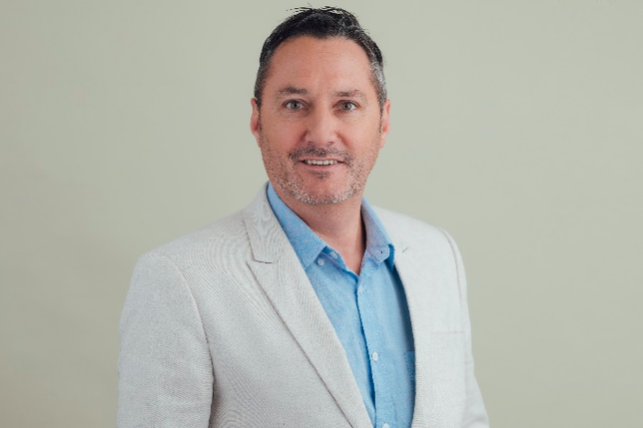Tony van Niekerk in conversation with Mark Barrow, National Marketing Manager at Mirabilis

Over the past decade, the Construction and Engineering insurance landscape in South Africa has undergone fundamental shifts. In this COVER interview, Mark Barrow, National Marketing Manager at Mirabilis, an Engineering division of Santam, outlines how the sector has been shaped by market pressure, shifting risk profiles, and evolving client needs, while remaining a resilient cornerstone of infrastructure development both locally and across Sub-Saharan Africa.
A Market under pressure – The most noticeable change, Barrow explains, has been the rise of unsustainable underwriting practices. With a sluggish economy and oversupply of capacity in the small to medium project segment, some underwriters have resorted to “quickest, cheapest, ask-no-questions” pricing, especially for lower-value projects. This has not only eroded margins but also increased systemic risk across the market.
Simultaneously, the renewable energy sector has gained momentum yet remains complex. Many projects are new, with limited historical data, requiring underwriters to tread carefully. Losses stemming from underestimated risks have been a reality. Larger projects now also face stricter scrutiny under ESG criteria, especially where foreign funding is involved, further influencing insurers’ risk appetite.
Global inflation, volatile exchange rates, and ongoing supply chain disruptions have intensified cost pressures and complicated claims handling. Reinsurers, still recovering from years of compounded losses, have responded by tightening treaty terms and reducing capacity, raising the bar for underwriting discipline across the industry.
Resilience amid challenges – Despite these hurdles, Barrow affirms that the South African engineering insurance market has shown remarkable resilience. Issues like the construction mafia, theft syndicates, and credit tightening continue to challenge the sector, yet opportunities remain. “Growth is still possible,” he notes, “but it requires a focused and adaptive approach.”
South Africa’s strategic position and infrastructure make it a compelling hub amid global supply chain realignment. Mining projects, logistics upgrades, and value-chain expansions offer renewed growth avenues, especially for insurers who can offer technically sound, flexible solutions.
Green shoots and public sector momentum – Although large-scale government infrastructure plans have faced delays, green shoots are emerging. Sectors like energy, water, transport, and hospitals are seeing renewed activity, albeit slower than hoped. Public Private Partnerships (PPPs) are proving a particularly effective model, unlocking development through shared risk and funding.
However, under-spending, red tape, and a shortage of technical skills continue to hamper rollout. The exit of top-tier contractors further compounds the pressure on project execution. Still, Barrow believes the recent increase in feasibility studies and tenders is a positive sign that the pipeline may finally be opening.
Expanding across Africa – Mirabilis has actively grown its presence across Sub-Saharan Africa, underwriting complex infrastructure projects with a blend of centralized technical expertise and local insight. “Every market is different,” Barrow explains, “but our aim is to provide consistent, high-quality insurance support while tailoring solutions to regional realities.”
Thanks to its partnership with Sanlam Allianz, Mirabilis has underwritten projects in nearly every African country, contributing to developments in energy, transport, healthcare, and education. Countries like Kenya, Ghana, Tanzania, Zambia, and parts of West Africa continue to show promise, especially where governments are investing in social infrastructure and attracting private capital.
The role of brokers – Throughout the economic downturn, many brokers have remained committed to the Construction and Engineering segment. Their ability to advise clients, navigate complex policy changes, and manage difficult conversations around pricing has added immense value. Barrow emphasises the importance of strong broker relationships, noting Mirabilis’ consistent support through service excellence, underwriting expertise, and training initiatives.
Addressing the industry-wide skills shortage, Barrow underlines Mirabilis’ investment in professional development. “We believe in building the next generation of underwriters,” he says, “and our African footprint provides exposure to diverse risks that shape well-rounded insurance professionals.”
Looking ahead – The path forward for Construction and Engineering insurance is paved with complexity, but also potential. For underwriters and brokers who stay close to clients, embrace technical depth, and adapt to emerging risks, the opportunities are substantial. As infrastructure needs grow, both in South Africa and across the continent, specialist insurers like Mirabilis are poised to play a critical role in shaping the future.
“Growth is still very much possible,” Barrow concludes, “but it requires a focused and adaptive approach, guided by real understanding of risk and a commitment to long-term partnership.”
Editor’s Thoughts
As South Africa pushes forward with long-awaited infrastructure projects and the rest of the continent builds momentum, the Construction and Engineering insurance sector finds itself at a critical crossroads. Mark Barrow of Mirabilis offers a grounded and insightful view into how the industry is being shaped by market forces, global challenges, and regional opportunity. His perspective reminds us that technical excellence, long-term partnerships, and the courage to adapt will define those who thrive in this environment. This article is not just a reflection on current trends — it’s a call to action for insurers, brokers, and policymakers to rethink how we build and protect the future.
In a sector where risk is rising and expertise is thinning, how can the industry collectively ensure that underwriting decisions today don’t compromise the infrastructure resilience of tomorrow?

